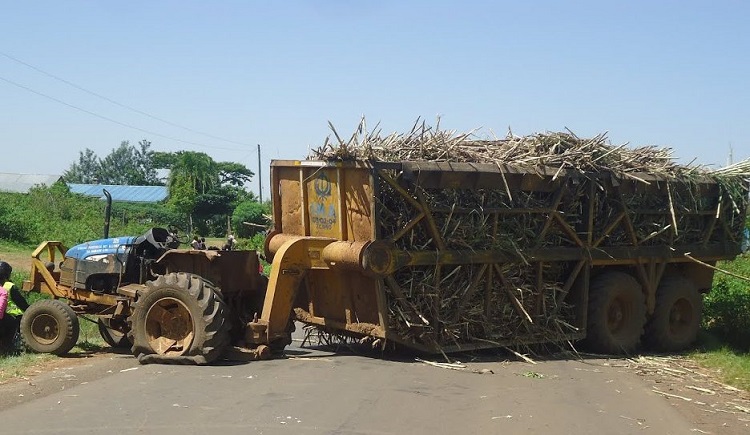Kenya produces about 600,000 tonnes of sugar yearly, compared with annual consumption of 870,000 tonnes thus, it is a sugar deficit country.
“Kenya is a deficit producer thus, most of her production is for the local consumers,” Agriculture and Food Authority (AFA) affirmed in their E-bulletin that focused on the ‘Big 4’.
Further, the sector has been riddled with mismanagement, cheap sugar imports, high operational costs and poor cane quality.
For instance, since 2013, Mumias Sugar Company, the only listed cane factory on the Nairobi Securities Exchange (NSE), received over a KSh3.2 billion bailout from the Government to revive it. Muhoroni sugar has been shut down attributed to soaring debts and unpaid taxes.
Consequently, the Common Market for Eastern and Southern Africa (Comesa) safeguards that have been in place to protect millers from cheap sugar is coming to an end.
The government was to initiate a raft of measures to improve the service delivery of its ailing sugar industry after being granted a one-year extension on sugar safeguards by the Common Market for Eastern and Southern Africa (COMESA).
The extension enabled Kenya to complete outstanding sectoral reforms to make sugar production competitive.
On the other hand, the process of privatising the sugar sector by targeting strategic investors to buy it’s 51 per cent holding in the sugar milling companies while outgrowers and employees are to get a stake of 24 per cent.
Over the years, the five owned parastatal sugar companies have incurred huge debts due to inefficiencies, corruption, mismanagement and political patronage.
The five sugar mills are Chemelil, Muhoroni, Nzoia, Sony, and Miwani. Both Muhoroni and Miwani are currently under official receivership.
It is a fact that the debts that have been bedevilling the sugar sub-sector are built out of commercial loans and unremitted tax assessment and levies, sugar development fund (SDF) loans and third-party creditors, which include sugar cane farmers’ unpaid arrears for cane harvested and delivered to the millers.
The sugarcane farmers’ debts are treated as unsecured third-party debts with no guarantee for a face value compensation open sale of these sugar companies’ assets.
This is a contentious matter since the debts were incurred in contravention of Sugar Act 2001 No. 10. Second schedule section 6. Whereas some of such debts in Sony, Nzoia and Mumias have been litigated at the regular law courts and the Sugar Arbitration Tribunal.
And with the expected new investors injecting substantial own funds to factory modernization and rehabilitation, the demand pressure on SDF loans for these activities will scale.” Such created reserve could utilize for upfront settlement of these farmers’ claims in totality, either as a grant or long-term liability to the exchequer.
The farmers were further told that the five parastatal sugar companies Chemelil, Nzoia, Miwani Muhoroni and SONY are set to be privatized during the ongoing government divestiture programme. This follows the cabinet approval in December 2008 and in line with the Privatization Act 2005.
Before Kenya’s independence in 1963, the sugar sector was purely in private hands. At the independence, the government started playing a central role in the startup, ownership and control of the industry. And within a span of 16 years,5 factories were established. These were Muhoroni (1966), Chemelil (1968), Mumias (1973), Nzoia (1978) and Sony (1979).
The total government equity contribution amounted to 80 per cent. And with time, other privately owned sugar companies sprang up. They included West Kenya Sugar Company Ltd, Kibos Sugar and Allied Industry and Soin Sugar in Kericho.
In 2008 total area under sugarcane crop in the existing milling zones were 169,421 ha, out of which 54,485 ha was harvested, producing 5,204,214 tones of sugarcane for milling in the same period total available rate milling capacity was 23,463 tones, cane per day out of which 56.25 per cent was utilized to produce 518,226 toners of made sugar.
The unutilized capacity could have produced an additional 23.93 per cent of sugar.
Sugar imports for the same period were 218,607, 42 per cent of total production (excluding the smuggled ones) with an estimated value of Kshs 6.9 billion the Kenya sugar sub-sector has, over time, become increasingly inefficient and uncompetitive and, at the same time does, meet domestic requirement.
According to the Kenya Sugar Directorate data, a cane census was carried out in December 2016 to assess sugarcane availability in the industry; the following observations were made:
The area under cane increased slightly from 219,802Ha in 2015 to 220,997Ha in 2016. This was 0.54% increase.
The cane available for crushing between December 2016 and June 2017 was estimated at 4,200,756 tons against the combined mills requirement of 6,125,400 tones. This reflects a cane deficit of 1,924,644 tons.
Further, the Sugar production of 377,818 metric tonnes was recorded in 2017 compared to 639,742 metric tonnes achieved in the same period last year, representing a 41 per cent decrease.
“The low production is as a result of acute cane shortage experienced in most sugarcane growing zones due to weather vagaries,” reported KSD.
Sugar imports in January – December 2017 totalled 989,619 tonnes compared to 334,109 tonnes shipped in the same period in 2016.
The sugar sub-sector also has substantial financial input to the exchequer, local authorities and own revolving fund.




